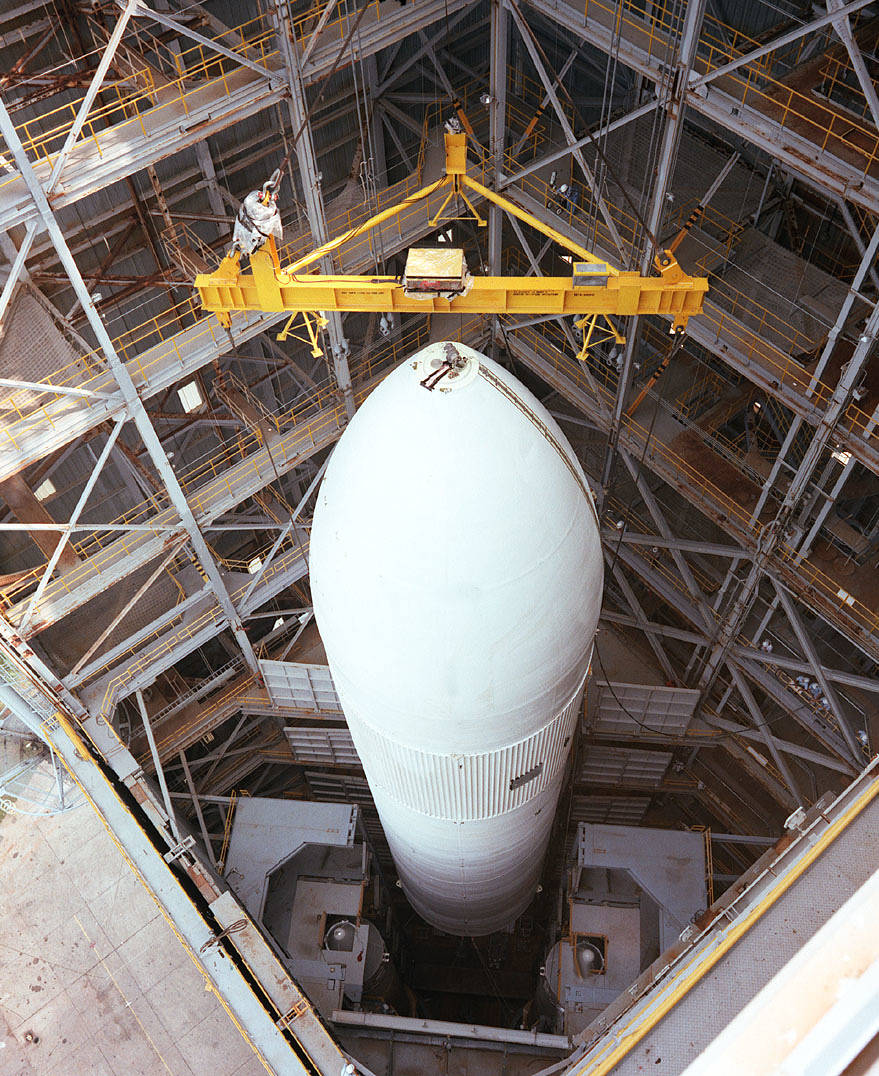
The first Space Shuttle flight, STS-1, took place on April 12, 1981, and the Marshall Space Flight Center in Huntsville, Ala., helped prepare the shuttle for its inaugural mission. In the 1970s, many space shuttle elements underwent testing at Marshall. Thirty-five years ago this week, engineers were preparing to insert the components for the Space Shuttle Enterprise into the Dynamic Test Stand located in Marshall’s East Test Area. By Friday night, April 21, 1978, for the first time anywhere a Space Shuttle orbiter pointed its nose toward space.
A Marshall-industry team raised Enterprise into a vertical position above the concrete pad of the 365-foot tall test stand. A crane on top of the test stand hosted the orbiter alongside the tall building, swung it inside and lowered it into place next to the external tank shown here. The tank and orbiter were soft-mounted inside the stand using a system with air bags and cables to suspend the vehicle from a large overhead truss installed like a crossbeam between two test stand walls. Engineers applied vibrations to the exterior with exciters powered by amplifiers similar to those found on home stereo sets. Sensors recorded the characteristics of the vibrations as they passed from one area of the vehicle to the other. These tests provided critical data needed so that the orbiter’s guidance, navigation, and control system could safely control the shuttle’s launch and flight.Image credit: NASA/MSFC




























